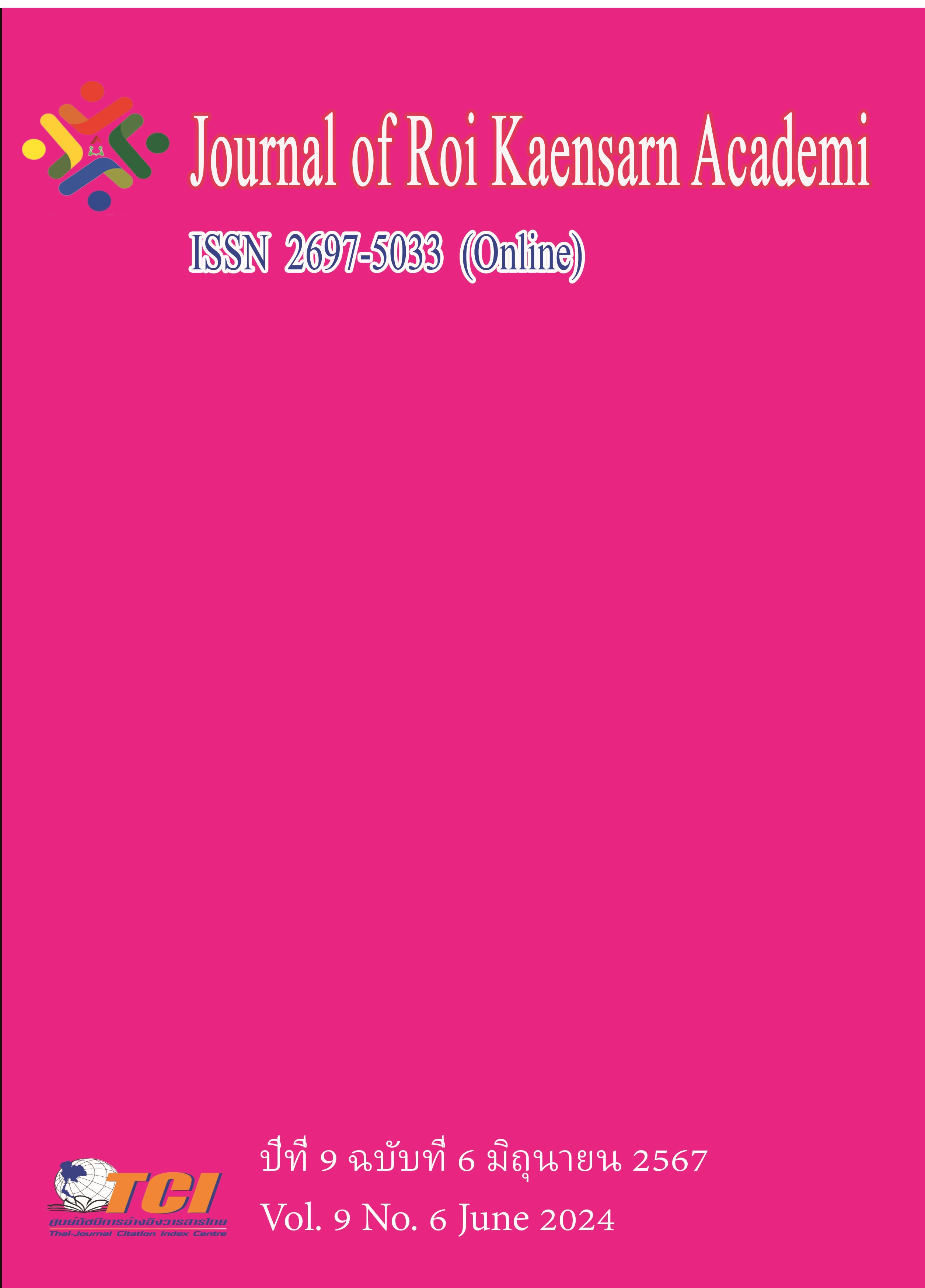A Study of the Artistic Beauty and Stylistic Continuity of Dunhuang Frescoes of the Flying Sky
Main Article Content
บทคัดย่อ
This article explores Dunhuang murals' artistic beauty and sculptural continuity, with a particular focus on the "Flying Apsaras" figures. The primary purpose is to explore the spread and evolution of the Dunhuang mural "Flying Apsaras" art form and thoroughly examine its artistic quality and durability. The research objectives of this article are as follows: (1) Analyze the basic types and characteristics of Dunhuang murals and study the artistic beauty of Dunhuang murals. (2) Study the continuity of the "Flying Apsaras" shape. By analyzing the basic types and characteristics of Dunhuang murals and by investigating the origin, artistic aesthetics, and style differences of "Flying Apsaras" images, we examine this art form from three different angles: analyze how to combine the historical development of "Flying Apsaras" shapes with the combination of modern science and technology proposes an effective combination of traditional mural art and contemporary animation. This study aims to understand the visual communication of modern art through the perspective of Dunhuang murals, explore various strategies for the continuation of "Flying Apsaras" clothing styles, and thereby contribute to the continuous development of the "Flying Apsaras" art form of Dunhuang murals.
Mixed research methods combined qualitative and quantitative analysis, including questionnaires, expert interviews, group discussions, etc. Build a joint research process for artists, designers, and ordinary consumers. Participants included three famous artists, designers, and 207 everyday consumers from Gansu Province, China. Through in-depth interviews and group discussions, various perspectives, artistic insights, and data on the art of Dunhuang Flying Apsaras were collected. They measured customer and expert satisfaction through evaluation forms to provide data support and insights for the future development of Flying Apsaras imaging.
The findings highlight the artistic beauty and sculptural continuity of the "Flying Apsaras" murals in Dunhuang, revealing the potential of mural art to connect the past and present, linking Dunhuang's rich history with its vibrant contemporary through Flying Apsaras symbol analysis and effect evaluation. The characteristics are integrated into one, and the research results are as follows:
(1) Combine artistic beauty with contemporary art forms and transform and innovate to enhance the continuity of the flying sky shape.
(2) The unity of Dunhuang art and animation reflects the effectiveness of Dunhuang art on technology.
(3) The effective dissemination of culture demonstrates the artistic heritage of Dunhuang and the ability to reveal cultural value in a modern context.
This research opens the way for creative adaptations in graphic design, advertising, and multimedia storytelling, bridging traditional and modern modes of communication.
Article Details
เอกสารอ้างอิง
Changwu, S. (2019). Chinese Buddhist Culture (Essence)--Collected Works of Sun Changwu. BEIJING BOOK CO. INC.
Chaozhi, Z., & Minmin, Z. (2020). Integration of culture and tourism: multi-level relationship connotations, challenges and implementation paths. Tourism Tribune/Lvyou Xuekan, 35(3), 79-83.
Feng, X., & Yuanbo, Z. (2020). The beauty of paradox: the transformation of Dunhuang mural images in animated images. contemporary movies.
Guohua, G., Xuelei, H., Meili, W., Kang, L., & Xiaowei, H. (2022). The cultural significance of Dunhuang Feitian murals.
Hui, W. (2014). Research on the beauty of Dunhuang flying Apsaras. China packaging industry(9X), 34-35.
Jie, A. (2021). Research on the artistic language of Dunhuang murals—taking the Northern Wei Dynasty as an example. Art Education Research.
Lian, L. (2004). The dialogue between Chinese Taoist culture and Indian Buddhist culture from the perspective of Chinese folk belief in Guanyin. humanities magazine. (1), 16-20.
Minhu, L., Zhao, L., & Ziwei, G. (2023). A brief analysis of the artistic beauty of Dunhuang Feitian and its application in clothing design. Wool Textile Journal, 51 (6).
Qianwen, D. (2022). The Evolution of Dunhuang Art Style Elements Sichuan Normal University].
Si, W. (2013). Research on the treasure pattern in the caissons of the Tang Dynasty in Dunhuang and its application in clothing Beijing Institute of Fashion Technology].
Xinhang, D., & Xiaoyang, W. (2017). A review of research on Buddhist grottoes in China from 2006 to 2015. artistic exploration, 31 (1), 86-105.
Yuchen, W. (2023). Research on the redesign of Dunhuang Grottoes murals in animation creation. Journal of Anhui University of Technology Social Sciences Edition, 40 (2), 50-53, 57.
Yun, L. (2013). Research and application of Dunhuang mural shapes during the Sui and Tang Dynasties. Heilongjiang Historical Records (21), 89-90.
Zhao, Z. (2020). On the Process of Neutralization of Feitian Art in Dunhuang Mogao Grottoes. Libraries and Cultural Studies, 2 (1), 101-104.

